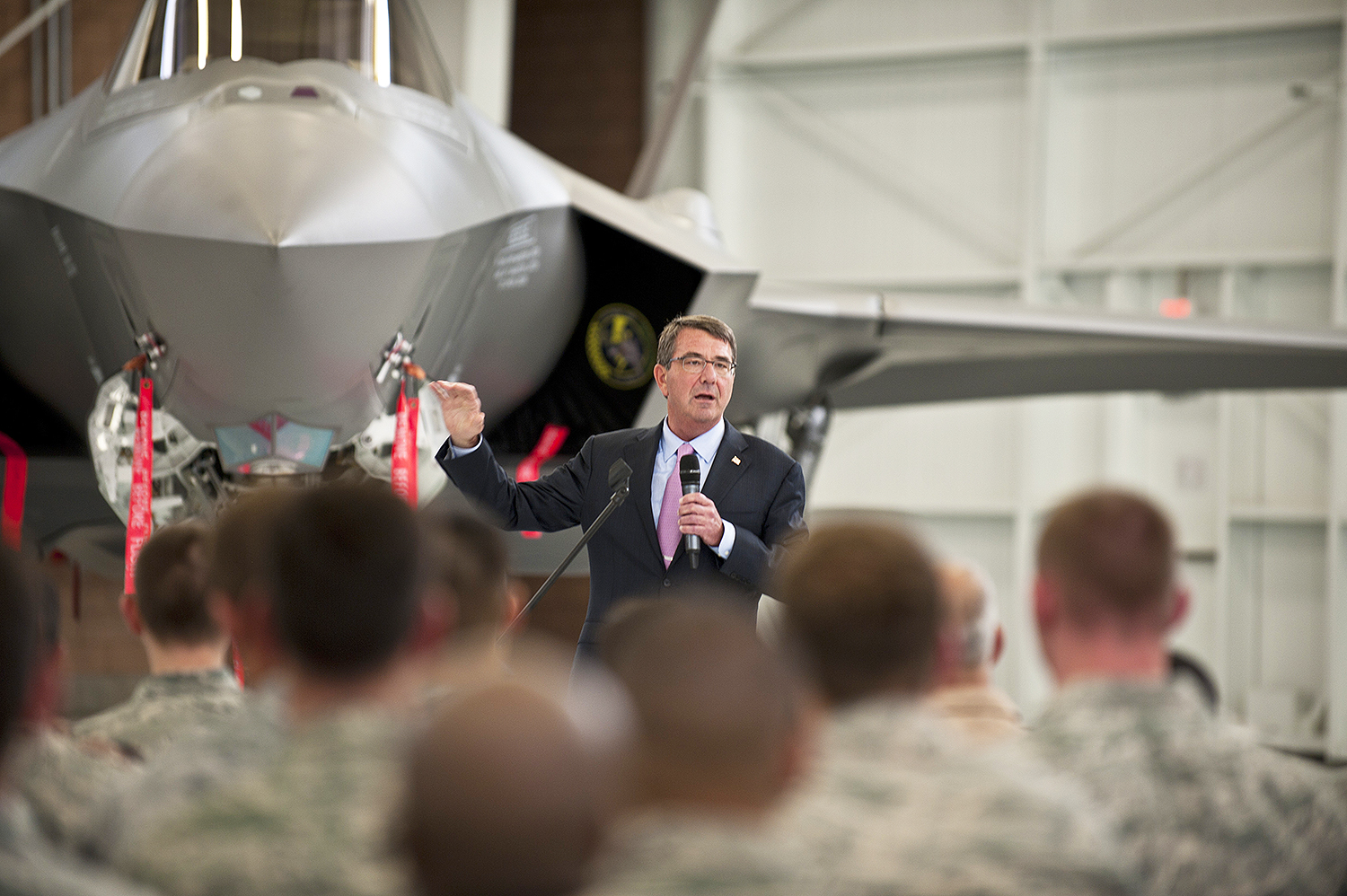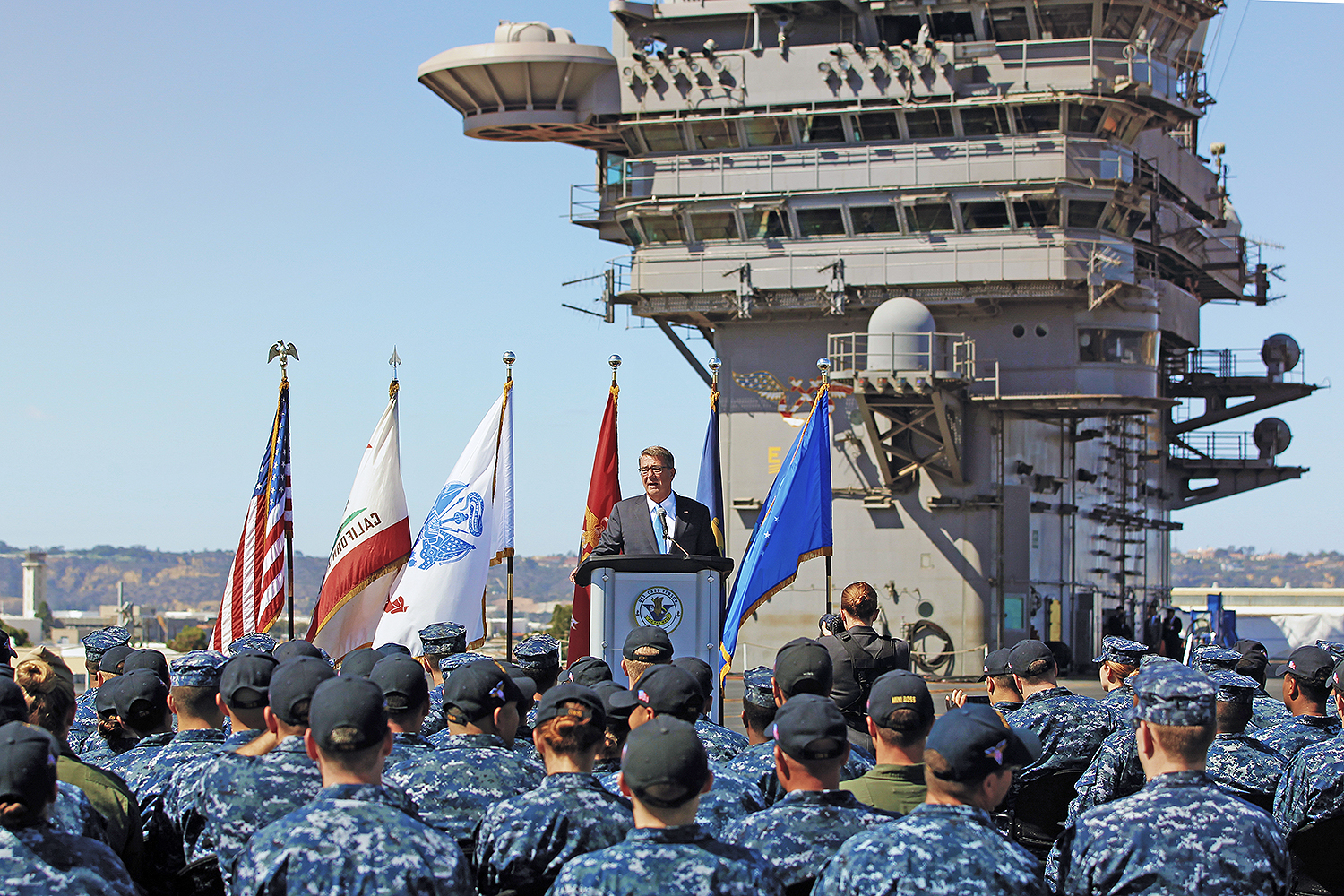SecDef Ash Carter is all about the Pentagon’s Third Offset Strategy, which is aimed at counteracting America’s shrinking force size and increased military and technological competition from abroad. This includes reimagining and redeveloping our military’s existing platforms and capabilities, as well as implementing highly focused new strategic investments that can offer synergistic and disruptive effects on the battlefields of the future. As you can imagine, some of these initiatives are cloaked in secrecy—but that doesn’t mean Carter stays totally mum as to their existence.
Back in February, Ash Carter spoke to airman at Nellis AFB, the heart and soul of the sprawling Nellis Range Complex that includes places like Area 51 and Tonopah Test Range Airport. During his speech he made it clear some serious programs in the works remain opaque to the public, stating in the official DOD transcript:
“We are adding funds, also, in the Air Force budget, to grow manpower in the maintenance area, because we need more maintainers, given the high operations tempo, to keep our Air Force aircraft ready.
So we’re doing all this at the same time that we’re modernizing the Air Force, so you’ll see in the future new aircraft here on the ramps. You see the F-35. You see — you’ll see shortly the KC-46 — the new tanker — and one day, maybe you’ll see — but maybe we won’t show — a new bomber.
And then there are other things you also won’t see, because we like to have some surprises, also, for potential adversaries. But they fly around and they train here as well.
So it’s a wonderful and extremely important installation, and at a time when we are setting a new direction for our — for — strategically, where the Air Force is a key part of that new direction, and where we’re allocating our defense dollars to implement that strategy, this is a place where it all comes together.”

“In the third phase of the rebalance, we’ll cement the progress we’ve made in the first and second phases, and build upon it…first, by continuing to qualitatively upgrade and invest in our regional force posture with sustained and strategic investments, which I’ll describe in a moment and second, by catalyzing the Asia-Pacific’s principled and inclusive security network even more.
In this next phase, the United States will continue to sharpen our military edge so we remain the most powerful military in the region and the security partner of choice. We’re already sending our best people and platforms into the region, and in the rebalance’s third phase, we’ll increase and target investments to ensure they – and all of you – stay the best.
Here are some of the path-breaking, and high-tech improvements we’re making beginning in this budget this year:
We’re going to make more of our Virginia-class submarines more lethal and more capable by tripling their Tomahawk cruise missile strike capacity with the Virginia Payload Module.
We’re increasing funding for undersea drones – in multiple sizes and diverse payloads – that can operate more effectively in shallow waters where manned subs cannot. These are part of more than $40 billion we’re investing over the next five years to ensure we continue to have the most lethal undersea and anti-submarine force in the world.
We’re ensuring our continued air superiority and global reach, including with over $12 billion over the next five years for the new B-21 Raider Long-Range Strike Bomber.
We’re investing more than $56 billion over the next five years to buy during this period alone more than [400] of the stealthy, fifth-generation F-35 Lightning II joint strike fighters – including more for the Navy and Marine Corps – while also improving avionics, radar, and electronic warfare systems in legacy bomber and fighter aircraft.
We’re upgrading our aerial tanker fleet, investing almost $16 billion over the next five years in KC-46A Pegasus tanker to help shrink the Asia-Pacific’s vast distances.
We’re re-purposing the SM-6 missile so that it can also strike enemy ships at sea at very long ranges.
We’re investing in other advanced munitions to improve range and accuracy for land attack and anti-ship missiles – some new torpedoes – as well as some very creative – and we’re sure unexpected by potential foes – ways to use such missiles across the varied domains of the Asia-Pacific.
And we’re also making large new investments in cyber, and electronic warfare, and space capabilities, a total of $34 billion just next year.”

Then the Secretary once again spoke cryptically about shadowy investments in new, disruptive, and highly classified technologies and capabilities:
“We’re going to have a few more surprises as well. These “leap-ahead” investments will keep us ahead in the Asia-Pacific, and elsewhere. I can’t share all the details on these for obvious reasons, but what our friends and our potential adversaries – and all of you – should know is that these new capabilities will help us keep our decades-old commitment to undergirding security in the Asia-Pacific, strong and unchallengeable. These advancements may change how we operate, they will, but they’ll never change why we do so: for the security for our people, for our friends and allies, and they principles that have benefited so many in the region for so long.”
So what could Carter be referring to? Well likely it is a number of systems built to break down an enemy’s anti-access and area denial capabilities, and to provide high-impact information, surveillance, and reconnaissance capabilities—even in the most inhospitable of enviroments. We know that an unmanned and very stealthy high-altitude, long-endurance (HALE) penetrating ISR aircraft exists, as do stealthy helicopters. We also know that very potent cyber weapons have been developed in recent years, some tailored to specific adversaries vulnerabilities. But there is a good probability that Carter is also alluding to a major clandestine unmanned combat air vehicle program as we have discussed in great detail before.
Other space-based and unmanned undersea technologies are also likely included in the classified side of Third Offset Strategy. Who knows, a massive hypersonic booster or stealthy special operations aircraft could also have a place in Carter’s little bag of tricks. Only time will tell, and depending on how the election goes, Carter’s term could be coming to an end soon. With the changing of the guard a new strategy may be put in place, and it is possible that glimpses of what Carter is talking about may surface.
Contact the author Tyler@thedrive.com
